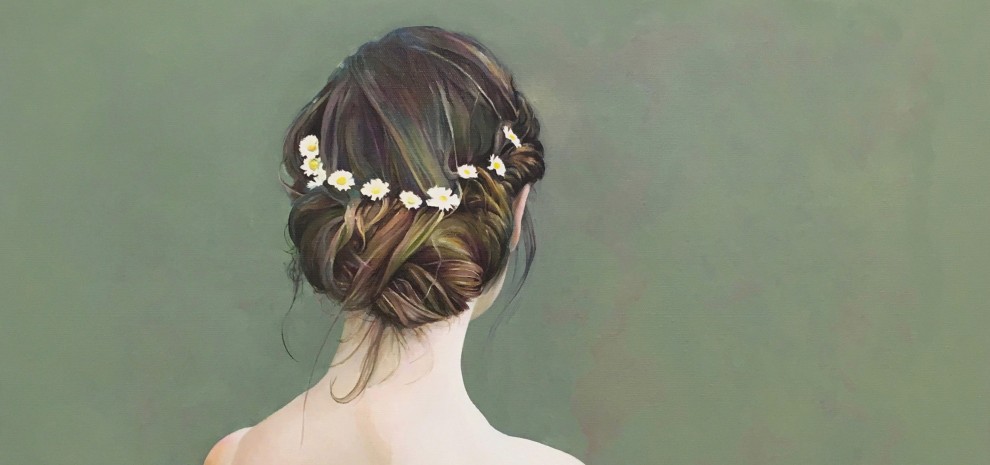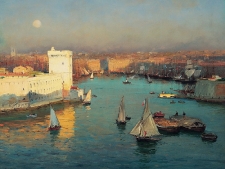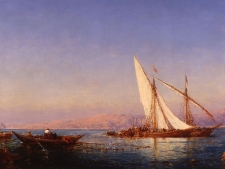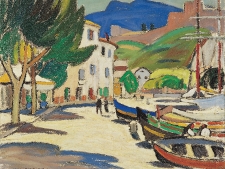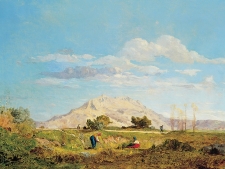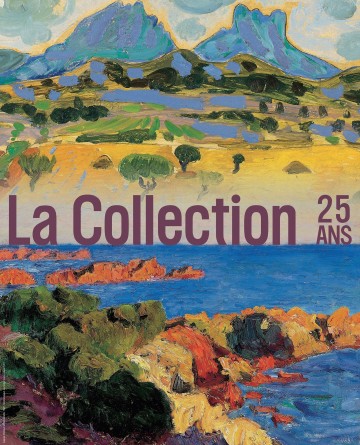
From May 12, 2023 to April 26, 2024, the Regards de Provence Museum is honoring the exhibition "The Collection - Its 25 years" bringing together some forty paintings from the 19th and 20th centuries, from the collection of the Regards de Provence Foundation, which celebrates its 25th anniversary in 2023. It offers a journey through time through Marseille, the southern coast and the Provençal countryside, highlighting the beauty and realism of the works of landscape painters and the talents of colorists of artists post-impressionists, fauvists and expressionists.
The craze for nature has generated an abundant pictorial focus, of great sensitivity and strongly rooted in heritage.
The artists translate what they experience, attesting to the beauty and diversity of the territory, each experimenting with his pictorial practice, whether academic, post-impressionist, symbolist, fauvist, resulting in spontaneous, clear and luminous painting.
The landscape played a key role in the plastic revolution of the 19th century and nature in Provence was a stimulating element for artists. Since the middle of the 19th century, the South has been a trendy destination, with Marseille, the Bouches du Rhône, the Alpilles, the Alpes de Hautes Provence, the Var, the Vaucluse and the Côte d’Azur. The countryside, the emblematic villages, the southern coast and the scenes of local life are all places and atmospheres that fascinate by their particularities, their lights, their colors, with the joy, the sympathy of the inhabitants who animate them.
Marseilles
The city of Marseille seems inseparable from the Mediterranean, like the sun which reinforces its reputation as a destination imbued with a particular light and exhilarating colors. A Marseillais by blood or heart, no one can remain indifferent to the elements and the unique panorama of the city, its ports and its surroundings. Jean-Baptiste Olive, Joseph Garibaldi, Raphaël Ponson, Félix Ziem, Albert Marquet, Emile Othon Friesz, are all painters who have drawned this singular city, its history, its heritage, its Vieux-Port, its Cathedral, and on the Marseille coast. The painters of the Mediterranean, whether or not they belong to the Ecole Provençale, are attached to this dialectic of nature and way of life. Attentive to local particularities and to the unique atmosphere emanating from the city of Marseille and its inhabitants, the artists have transcribed on their canvas the animation of the port areas, the daily life of the fishermen, the solitude of the still wild coasts, the variety lights on urban and natural landscapes. So many variations of points of view and sensitivities felt on the motif that these artists have endeavored to magnify.
The coast, from Martigues to Agay
Painters will also turn to the coast, rediscovering – such as Charles Camoin, Armand Guillaumin, Emile Othon Friesz, Louis Valtat, Louis-Mathieu Verdilhan or René Seyssaud – the charm of small towns like Martigues, Cassis or La Ciotat. Cassis and La Ciotat were for a long time industrial communes, where fishing, the food trade and shipyards were authoritative, before becoming the seaside and trendy cities that we know. They did not benefit less from an exceptional geography, a mixture of creeks and hills which quickly fascinated artists. They will give a vision all in chromatic volumes with audacious compositions, which hold the attention by their colorful and luminous extravagance. The red rocks of Agay are a geological curiosity backed by the Estérel massif, one of those exceptional sites of beauty, such as those found in Provence. The painters were inevitably attracted by these natural elements, being always in search of wonders.
Rural Provence
Under Émile Loubon born in 1845, leader of the École Provençale, Provence became an open-air workshop, a pictorial and experimental home for all its regional landscape painters. This regionalist school describes its country through its most specific elements: the light of the South, the colors, the vegetation, the costumes and the regional customs. Regional traditions come to life under the brushes of artists, who glorify the daily and bucolic scenes of Provence. They celebrate life, their region, its festivals and customs. Over the canvases, we come across living or wild Provence which is represented by Emile Loubon, Alphonse Moutte, Paul Guigou, Théophile Mayan, Frédéric Montenard or Adolphe Monticelli. Peaceful and serene sites where nature reigns by its splendor, its purity and its strength and where man and his animals unite there on a daily basis.
In the 20th century, this vision of the South was shaken up by a young generation claiming a personal identity. Auguste Chabaud, René Seyssaud or Louis-Mathieu Verdilhan demonstrate the qualities of colorists with light effects, using thick material with strong colors. This vision of the South is exalted by the generation of modern artists, who want a renewal. They are daring, by the choice of pure tones, the synthesis or the gathering of forms in concentrated masses.
Practical information and visits to the Regards de Provence Museum
Open Tuesday to Sunday from 10 a.m. to 6 p.m.
Temporary exhibition ticket: Full Price: €8.50.
Reduced prices: €7.50 – €6.70 – €5.70 – €4.00 – €3.00.
Guided tours outside the group in French: entrance fee + €7 /pers. (excluding groups), Tuesday and Saturday at 3 p.m. by reservation.
Guided tours for groups in French: entrance fee + €7 /pers., every day by reservation.
Free guided tour in French outside of groups on the first Saturday of each month at 10:30 a.m., excluding entrance fee (full price) by reservation (6 to 25 people).
Plastic art workshop on the first Saturday and third Sanday of each month: price: €12, including entrance fee and free supplies (from 5 to 20 people maximum – duration 1h30 ).
Registration by reservation at info@museeregardsdeprovence.com or 04 96 17 40 40
